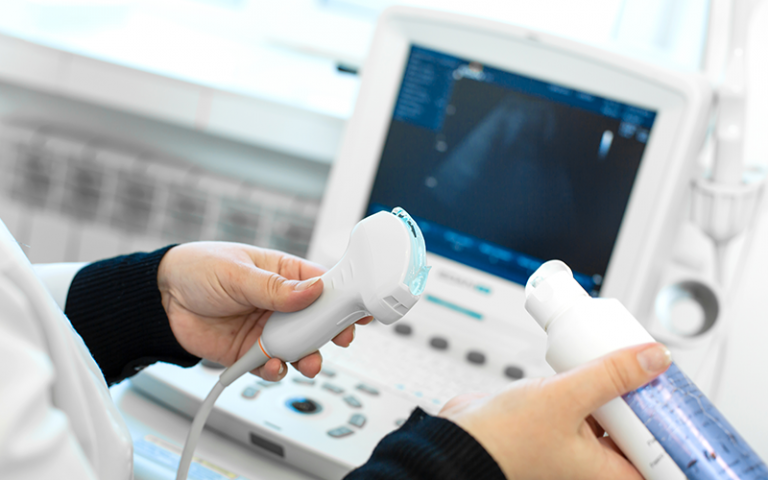Driving improvements in care for people with Crohn’s disease
Clinical research at UCL has helped change the diagnosis and monitoring of Crohn’s disease by using safe and cost-effective techniques such as MR enterography and ultrasound.

12 April 2022
Each year in the UK at least 115,000 people are diagnosed with Crohn’s disease (CD). Radiological imaging is fundamental to managing CD but exposes patients to x-rays which increase cancer risk. UCL/UCLH research has improved how patients are diagnosed and monitored internationally.
Professor Stuart Taylor is an academic clinical radiologist in Centre of Medical Imaging based in UCL’s Division of Medicine. His work has changed NHS practice, and tests using x-rays are now being replaced by cost-effective, well-tolerated alternatives, potentially preventing around 25-30 radiation-induced cancers per year.
The need for safer alternatives to x-rays
CD is a chronic inflammatory bowel disease, requiring lifelong medical and surgical therapy. Imaging tests such as CT scanning are used to diagnose and monitor patients but can expose patients to significant doses of x-rays, increasing cancer risk in these predominantly young patients.
To evaluate safer alternatives, the UCLH-BRC funded Professor Taylor and Steve Halligan, Professor of Gastrointestinal Radiology, to lead a large multicentre trial testing the diagnostic accuracy and patient satisfaction of MR enterography (MRE - a specialised MRI of the bowel) and intestinal ultrasound (US), neither of which use x-rays.
The METRIC study (2013-2016), commissioned by the NIHR, was a formal collaboration between UCL and the NHS, involving almost 300 patients and running at 8 hospitals and 4 NIHR BRCs. METRIC found that both MRE and US achieve high accuracy for localising small bowel CD, were cost effective, and well tolerated by patients.
Driving changes in national and international clinical guidelines
The findings led to changes in clinical guidelines by the British Society of Gastroenterology and European Crohns and Colitis Organisation, which both now recommend MRE and US as first line tests in CD. The charity IBD UK includes test access in their national service benchmarking tool. As a result, MRE use in the NHS has increased by 79% in the last six years and tests using x-rays have fallen by 63%, reducing the incidence of diagnostic radiation induced cancer.
The UCL/ UCLH team has also developed imaging software using MRE to assess early treatment responses. The technology has now been rolled out via a spin-out company Motilent as an EU-approved product – GI Quant – across seven NHS sites.
National and international clinical guidelines now recommend MRE to monitor response to treatment in people with CD, including in clinical trials.
Research synopsis
MR enterography and intestinal ultrasound improves patient care and management of Crohn’s disease
Each year in the UK at least 115,000 people are diagnosed with Crohn’s disease (CD). Radiological imaging is fundamental to managing CD but exposes patients to x-rays which increase cancer risk. UCL/UCLH research has improved how patients are diagnosed and monitored internationally. Professor Stuart Taylor’s work has changed NHS practice, and tests using x-rays are now being replaced by cost-effective, well-tolerated alternatives, potentially preventing around 25-30 radiation-induced cancers per year.
Links
- Professor Stuart Taylor’s academic profile
- Professor Steve Halligan’s academic profile
- UCL Division of Medicine
- UCL Faculty of Medical Sciences
- UCL Medical Sciences REF 2021
Image
- Image credit: iStock / Kateryna Kukota
 Close
Close

